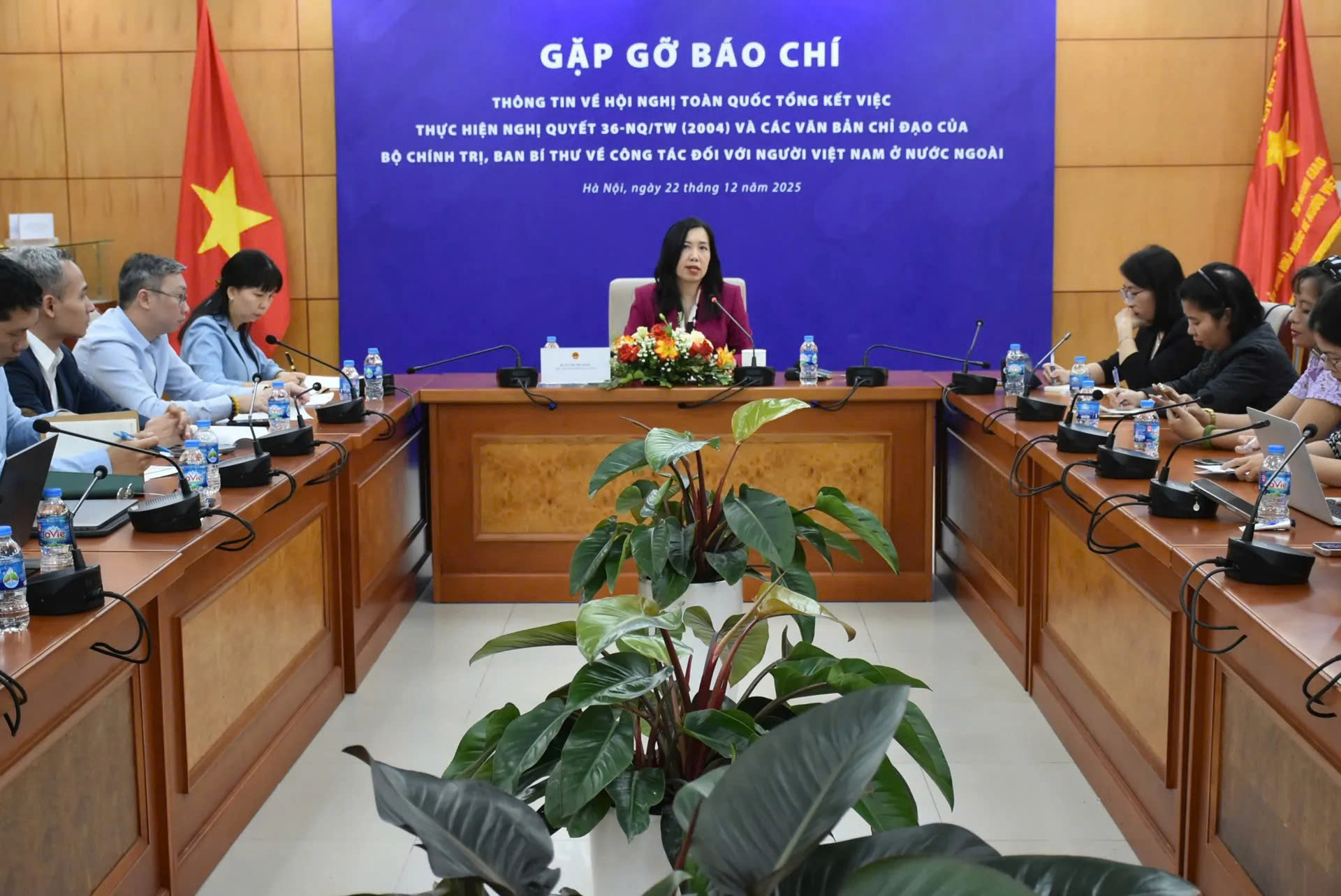
Vietnam to review over 20 years of Resolution 36 on overseas Vietnamese
19:05 | 23/03/2025 16:32 | 23/12/2025News and Events
From the Red river to the Indus
It was a late-autumn noon in Hanoi when the delegation set off. After 2 hours of flight, a four-hour layover in Bangkok, and another five hours in the air, I found myself for the first time in Pakistan, a land between desert, river, and sea. Once torn by wars, terrorism, floods, and pandemics, the country now stands at the threshold of recovery, gradually rekindling the flame of growth.
The plane touched down in Islamabad under a parched afternoon sky. The air carried the scent of dust and dry flowers. Outside, crescent-and-star flags fluttered in the golden haze, a quiet reminder that this was a nation that had risen from ashes, again and again.
Through the car window, Islamabad unfolded in muted tones: misty mountains, sparse yet peaceful streets, autumn leaves scattered along the roadside. It was the first time in 20 years that a Vietnamese minister had set foot in Pakistan, an ancient crossroads of civilizations once bustling along the Silk Road.
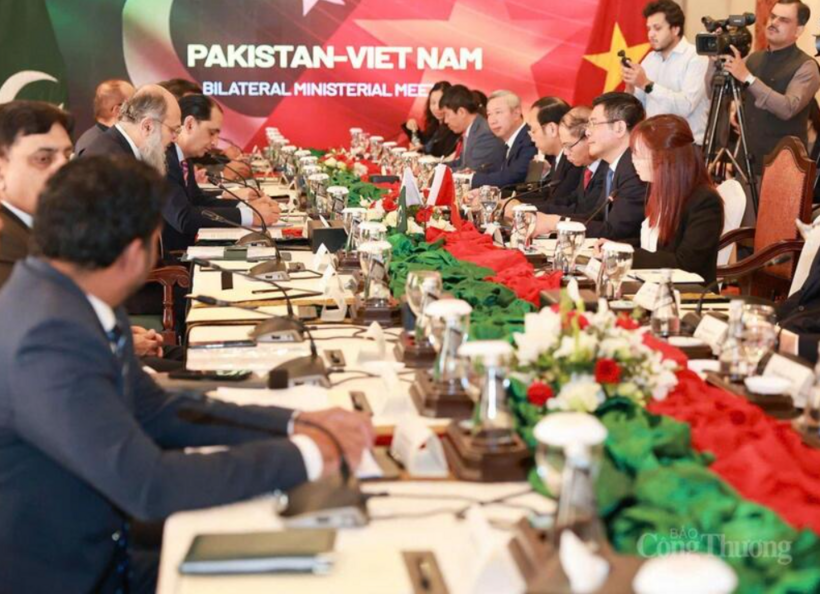
On October 14, 2025, in Islamabad, Pakistan, Vietnamese Minister of Industry and Trade Nguyen Hong Dien holds talks with Pakistan’s Minister of Commerce Jam Kamal Khan to promote bilateral economic and trade relations.
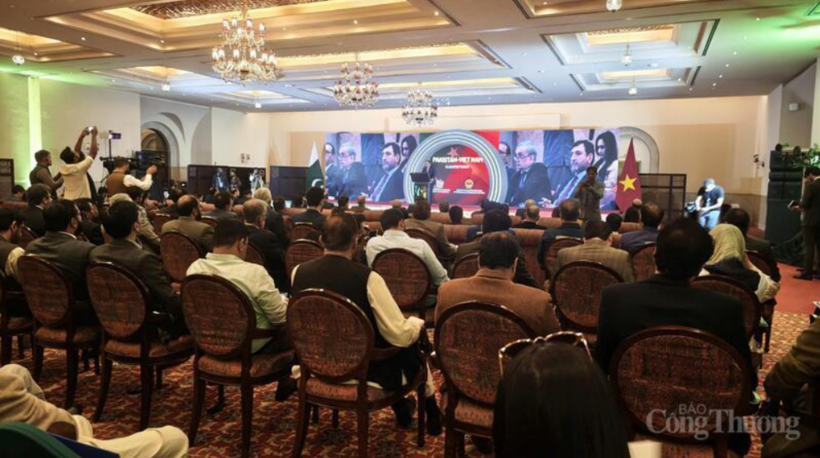
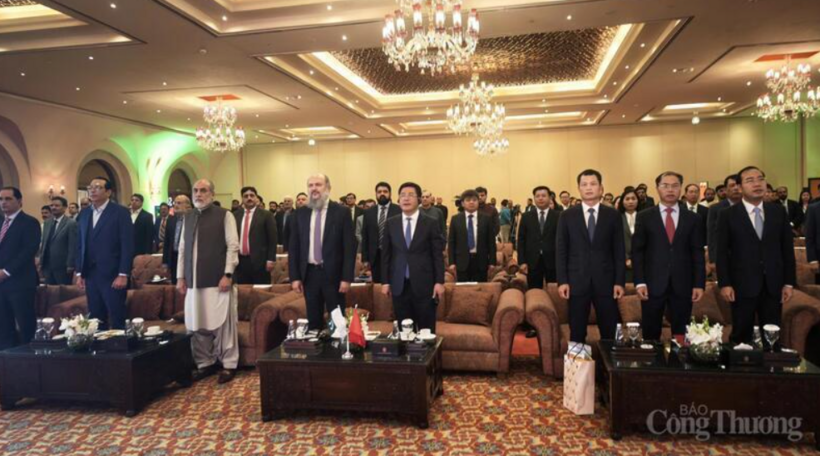
The Vietnam - Pakistan Business Forum attracts the participation of five Pakistani ministers.
In the immigration hall, the sight of the delegation’s red flag with its bright yellow star stirred a quiet pride. Ambassador Pham Anh Tuan, Vietnam’s ambassador to Pakistan, was visibly moved as he welcomed Minister Nguyen Hong Dien, marking the first high-level visit from Vietnam in over two decades, across more than 4,000 kilometers.
The MoIT leader emerged from the gate with brisk steps, sharp eyes, and the resolute air of one carrying a conviction: “Vietnam can chart a new Silk Road of trade between our two nations and across Asia''.
Pakistan, as I soon saw, was both familiar and foreign, a nation rebuilding after years of natural disasters and economic turbulence, home to more than 256 million people, twice Vietnam’s population, resiliently living by the Indus River. That river has nourished civilizations for millennia, and often drowned them in the same breath.
Amid that landscape, the image of Minister Nguyen Hong Dien striving to open the market and revive bilateral trade carried a quiet symbolism: from those fine white Indus cotton threads, perhaps a new chapter in Vietnam - Pakistan relations will be woven.
20 years of cargo across the Arabian Sea
More than 20 years have passed since the last Vietnamese ministerial visit to Pakistan. Since the two nations established diplomatic relations in 1972, high-level exchanges have been few. Yet over five decades, the bond has endured, sustained by the humble rhythm of trade, containers of tea, pepper, and pangasius silently crossing the Arabian Sea.
If one were to capture this economic partnership in a single frame, it might be the 2022 photo commemorating the 50th anniversary of diplomatic relations, smiling faces of delegates from both sides beneath the banner “the 50th anniversary of Vietnam - Pakistan diplomatic relations”.
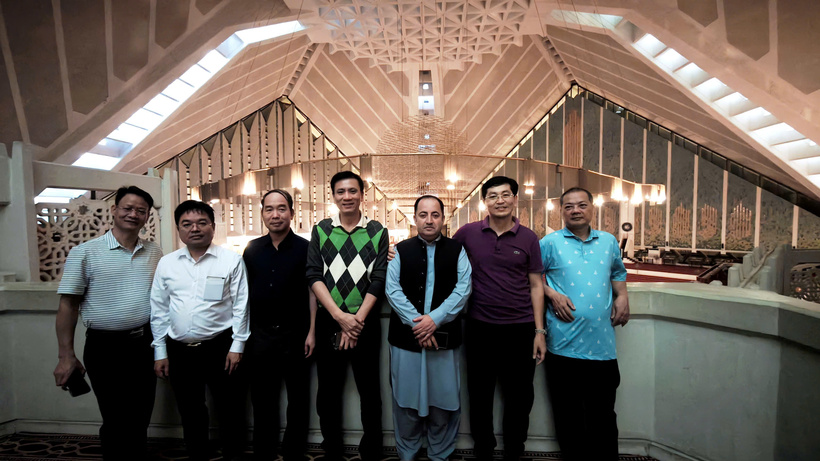
The Vietnamese delegation takes a photo with Pakistani entrepreneur Rabnawaz, who represents the new generation of ambitious and forward-looking business leaders in Pakistan today.
Behind those smiles lie years of persistence, sporadic at first, then increasingly regular, through trade missions, memoranda, and agreements quietly clearing paths for goods, services, and ideas to flow. That photograph marks the midpoint of a long book, half a century of moving from fragile beginnings to a tangible, pragmatic partnership. And in every chapter of that story, one finds familiar figures: officials from the Ministry of Industry and Trade quietly paving the way for bilateral commerce.
Among the pioneers is Rabnawaz, an old friend of Ha from Vietnam’s Import-Export Department. His family typifies Pakistani merchants, 5 brothers dealing in pharmaceuticals, steel, agriculture, and tobacco across the globe, including Vietnam. When he heard about Minister Dien’s visit, he drove more than 500 kilometers with his three sons to welcome the delegation in Islamabad.
He spoke with passion about the early links of trade. In 1998, Vietnam sent its first business delegation to Pakistan for meetings with the Ministry of Commerce and visits to factories, an exploratory mission that sowed the seeds of partnership. A year later, bilateral trade reached its first milestone, USD 10 million. By 2008, it had climbed to USD 150 million.
Following President Pervez Musharraf’s visit to Vietnam in 2001, bilateral ties strengthened further. The two countries signed key agreements in 2002 and established a Joint Ministerial Commission soon after. In 2003, Deputy Minister of Trade Do Nhu Dinh led a trade mission to Pakistan, followed by the first Joint Committee meeting in Hanoi. Then, in March 2004, President Tran Duc Luong’s state visit marked a historic leap, elevating Vietnam-Pakistan relations to a new level.
Subsequent years saw more milestones, Deputy Minister Le Duong Quang’s 2011 mission, Prime Minister Nguyen Tan Dung’s 2014 statement urging deeper trade cooperation, and a growing network of legal frameworks, the 2001 Trade Agreement, the 2004 Double Taxation Avoidance Agreement, and accords on technology, visa exemptions, and banking collaboration. These signatures, though quiet, became the arteries through which the bilateral partnership thrived.
By the numbers, the journey has been steep. From a mere USD 10 million in the late 1990s, bilateral trade rose to USD 242 million in 2010, USD 331 million in 2014, USD 644 million in 2016, nearly USD 800 million in 2021 amid the pandemic, USD 904 million in 2022, and close to USD 850 million in 2024.
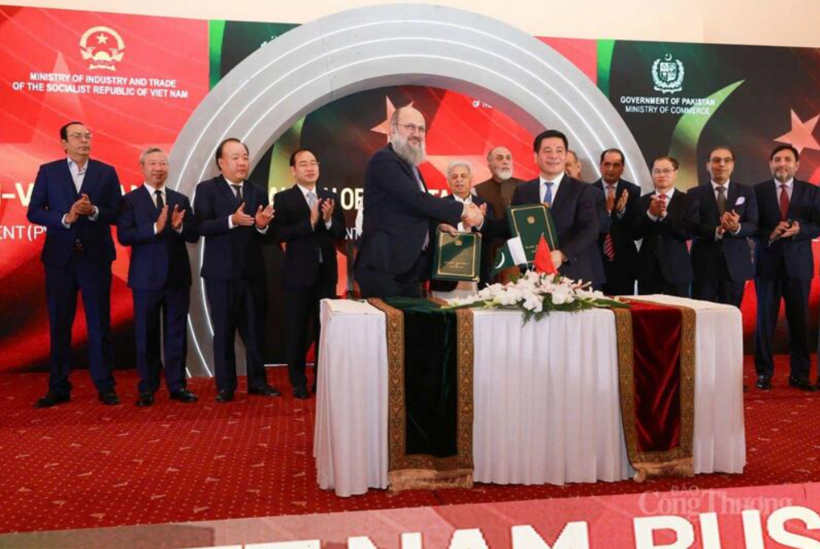
At the Vietnam - Pakistan Business Forum, Minister Nguyen Hong Dien and Mr. Jam Kamal Khan, Pakistan’s Minister of Commerce, signed a Joint Declaration to launch negotiations on the Vietnam - Pakistan Preferential Trade Agreement (PTA).The agreement is expected to leverage the complementary strengths of the two dynamic economies, boosting bilateral trade turnover, currently under USD 1 billion per year, by 5 to 10 times in the coming years.
The leap from USD 10 million to nearly USD 1 billion was not an arithmetic miracle, it was the cumulative result of trust, persistence, and countless trade promotions, policy reforms, and market adaptations. Each milestone carries the imprint of meetings, expos, and sometimes, stalled negotiations over tariffs or Halal regulations. But through it all, the current never stopped flowing.
The Indus gateway: Echoes of old Vietnam and lessons for the future
Nguyen Thi Diep Ha, first Secretary and Trade counselor at the Vietnamese Embassy in Pakistan, guided us through a market in central Islamabad. I felt as if I were glimpsing Vietnam in the 1980s, narrow shopfronts, tangled wires, motorbikes darting through dusty lanes, and the gentle smiles of ordinary people. Yet behind that nostalgia lies change, Pakistan is restructuring, privatizing state enterprises, curbing public spending, and pushing exports.
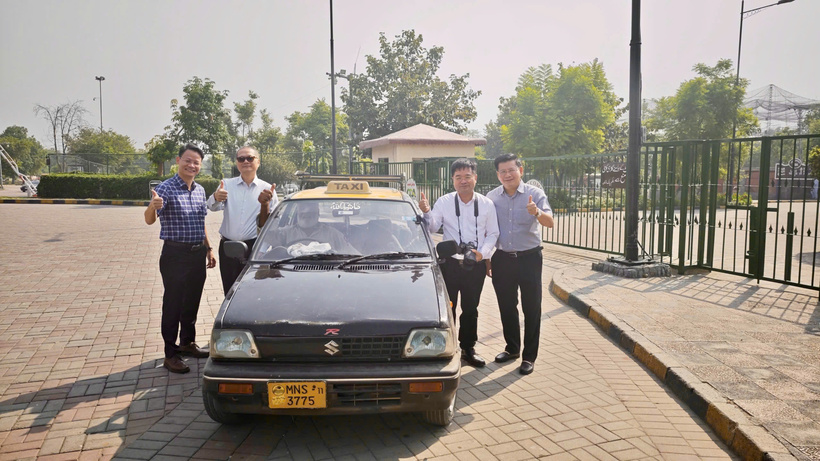
In Islamabad, old taxis are still in operation. In the photo, the author (second from right) with several members of the Vietnamese working delegation in Pakistan.
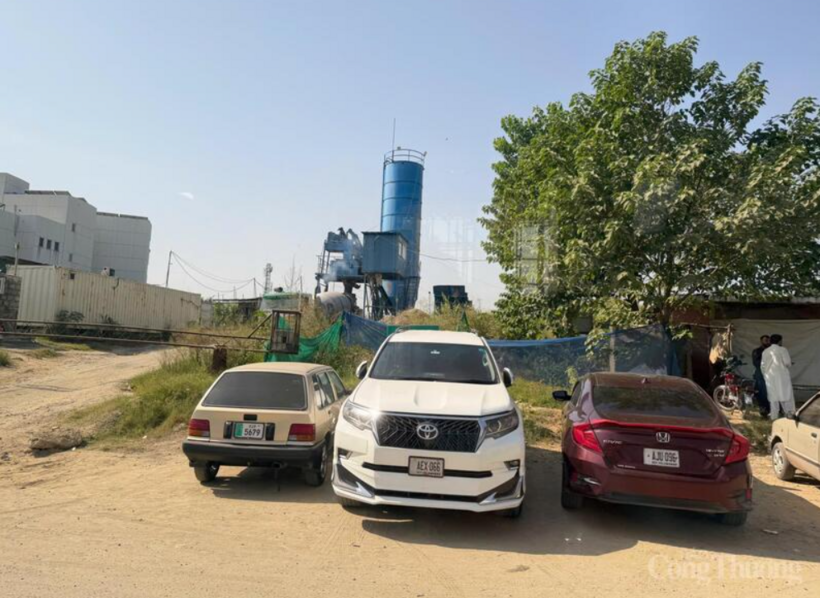
Pakistan’s capital today bears a resemblance to Vietnam in the early years of renovation period.
The USD 60 billion China - Pakistan Economic Corridor (CPEC), launched in 2013, has brought highways and solar power but also heightened dependence. With 256 million citizens, Pakistan is now the world’s fifth most populous country, ranked 24th in GDP (PPP) and 46th in nominal terms, with GDP of USD 371 billion and per capita income of USD 1,484, roughly where Vietnam stood 15 years ago. As Counselor Ha noted, “The two nations share many similarities, yet Vietnam has already found its gateway to global trade”.
Table 1. Comparison of Vietnam - Pakistan macroeconomic indicators (2000 - 2024)
| 2024 (IMF estimate) | Growth (2000 - 2024) | Key observations | ||
| Nominal GDP (USD billion) | Vietnam: 31.17 Pakistan: 99.48 | Vietnam: 429.72 Pakistan: 338.37 | Vietnam up roughly 13.8-fold Pakistan 3.4-fold. | Vietnam surpassed Pakistan after two decades |
| GDP per capita (USD) | Vietnam: ~400 Pakistan: ~650 | Vietnam: 4,320 Pakistan: 1,484 | Vietnam grew over tenfold. Pakistan about 2.3-fold. | Vietnam moved faster into the middle-income group |
| Exports/GDP (%) | Vietnam: 45% | Vietnam: 98% Pakistan: 10.5% | Vietnam nearly 100% Pakistan remains low. | Vietnam far more integrated into global value chains |
| Average inflation (%) | Vietnam: 4.1 Pakistan: 6.5 | Vietnam: 3.8 Pakistan: 25 | Pakistan faces macroeconomic instability. Vietnam maintains stable control. |
Table 2: Comparison of social indicators and global competitiveness
| Indicator (2024) | Vietnam | Pakistan | Data source (2024) |
| Population (million) | 100.3 | 256 | United Nations (UN Data) |
| Global competitiveness ranking | 46 | 110 | World Economic Forum |
| Global Innovation Index (GII) | 45 | 88 | WIPO 2024 |
| Literacy rate (%) | 97.5 | 62.3 | UNESCO |
| Average life expectancy (years) | 74.8 | 66.1 | WHO |
| Internet users (% of population) | 78 | 34 | ITU 2024 |
Perhaps that is why, in the recent ministerial dialogue, Pakistan’s Federal Minister of Commerce Jam Kamal Khan openly expressed admiration for Vietnam’s transformation, calling it “an inspiration for developing economies, including Pakistan.”
The sentiment echoed in the Vietnam - Pakistan Business Forum, where not only Minister Jam Kamal Khan but also 4 other federal ministers and a parliamentary secretary attended, a rare gesture of respect and interest. Among them were the Ministers of Science and Technology, Communications, Maritime Affairs, and Food Security, underscoring Pakistan’s strategic attention to Vietnam.
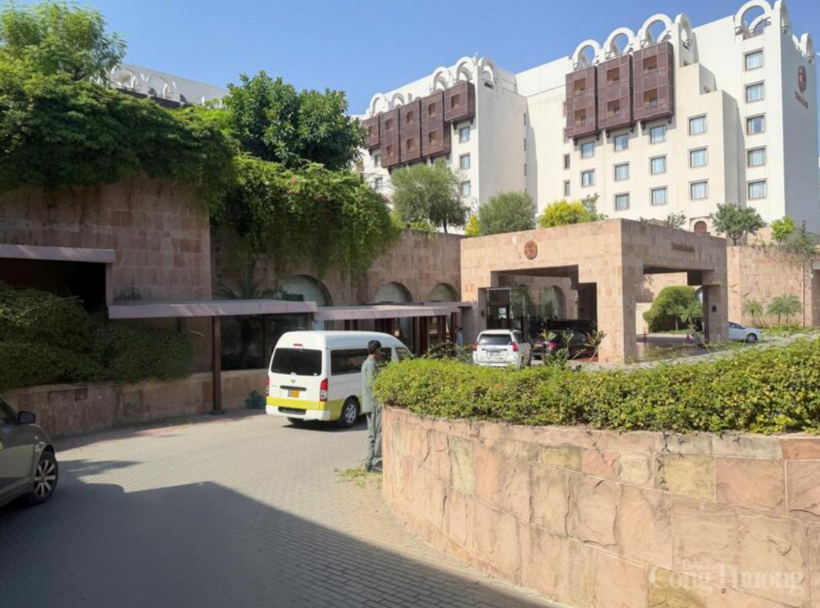
A glimpse of Islamabad today.
Indeed, remnants of “old Vietnam” still linger in the aging factories of Faisalabad, but within them burns the same spirit of renewal that once lifted Vietnam. As Vietnam once leveraged free trade agreements and openness to propel its growth, Pakistan now seeks its first Preferential Trade Agreement (PTA) with Vietnam, a bridge from Indus cotton to the world’s markets.
Of course, the path ahead is not without obstacles. The two nations began their modern journeys under different circumstances, Vietnam rose from war and central planning through Doi Moi, while Pakistan’s earlier independence was tempered by political instability, natural disasters, and debt burdens. Yet both have faced the same century-defining challenge: how to self-define their growth paths amid globalization, fiscal strain, and structural reform.
When comparing trajectories, the contrast is striking. In 2000, Vietnam’s GDP stood at USD 31 billion, barely one-third of Pakistan’s USD 99 billion. Two decades later, the roles reversed, by 2023, Vietnam’s GDP reached approximately USD 430 billion, surpassing Pakistan’s USD 338 billion.
Table 3: Structure of bilateral trade between Vietnam and Pakistan (2000 - 2024)
| Year | Bilateral trade value (million USD) | Vietnam’s main exports to Pakistan | Vietnam’s main imports from Pakistan |
| 2000 | 10 | Tea, pepper, seafood, rice | Yarn, pharmaceuticals, leather |
| 2010 | 242 | Textiles, plastics, chemicals | Steel, pharmaceuticals, cotton |
| 2022 | 904 | Processed industrial products, electronics | Agricultural products, pharmaceuticals, garment materials |
| 2024 | 850 | Remains stable despite global uncertainties |
Vietnam’s export-to-GDP ratio has hovered near 100% for years, signaling an open, trade-driven economy. Pakistan’s, by contrast, remains modest, reflecting untapped potential in global value chains.
From a lower starting point, Vietnam has demonstrated that determined reform and integration can ignite national transformation. Pakistan’s road may be longer, but within that distance lies opportunity, to learn, to adapt, and perhaps, to walk the path that Vietnam once carved along its own river, the Red River, toward prosperity.

19:05 | 23/03/2025 16:32 | 23/12/2025News and Events

19:05 | 23/03/2025 16:30 | 23/12/2025Trade
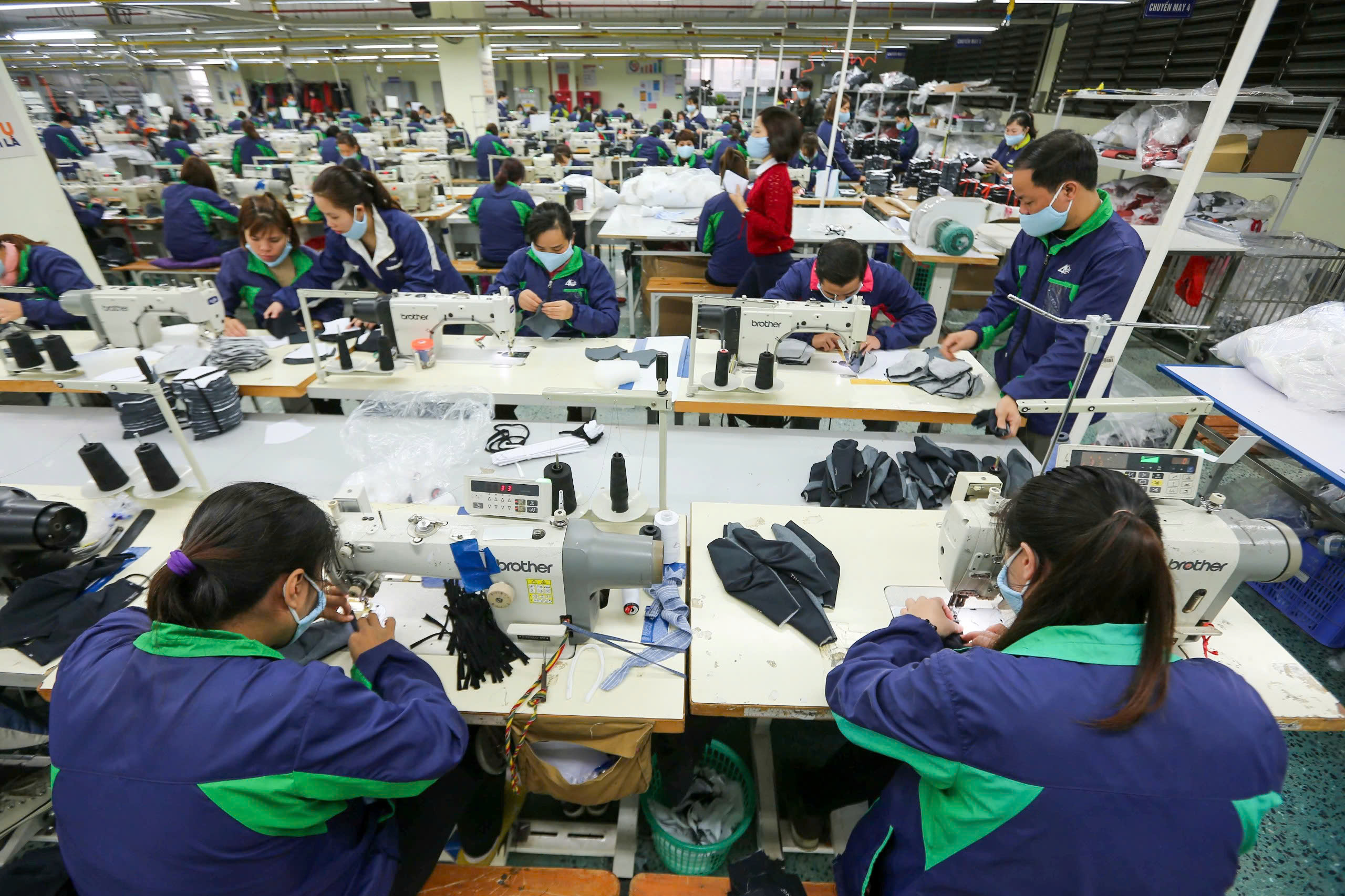
19:05 | 23/03/2025 23:26 | 22/12/2025Industry
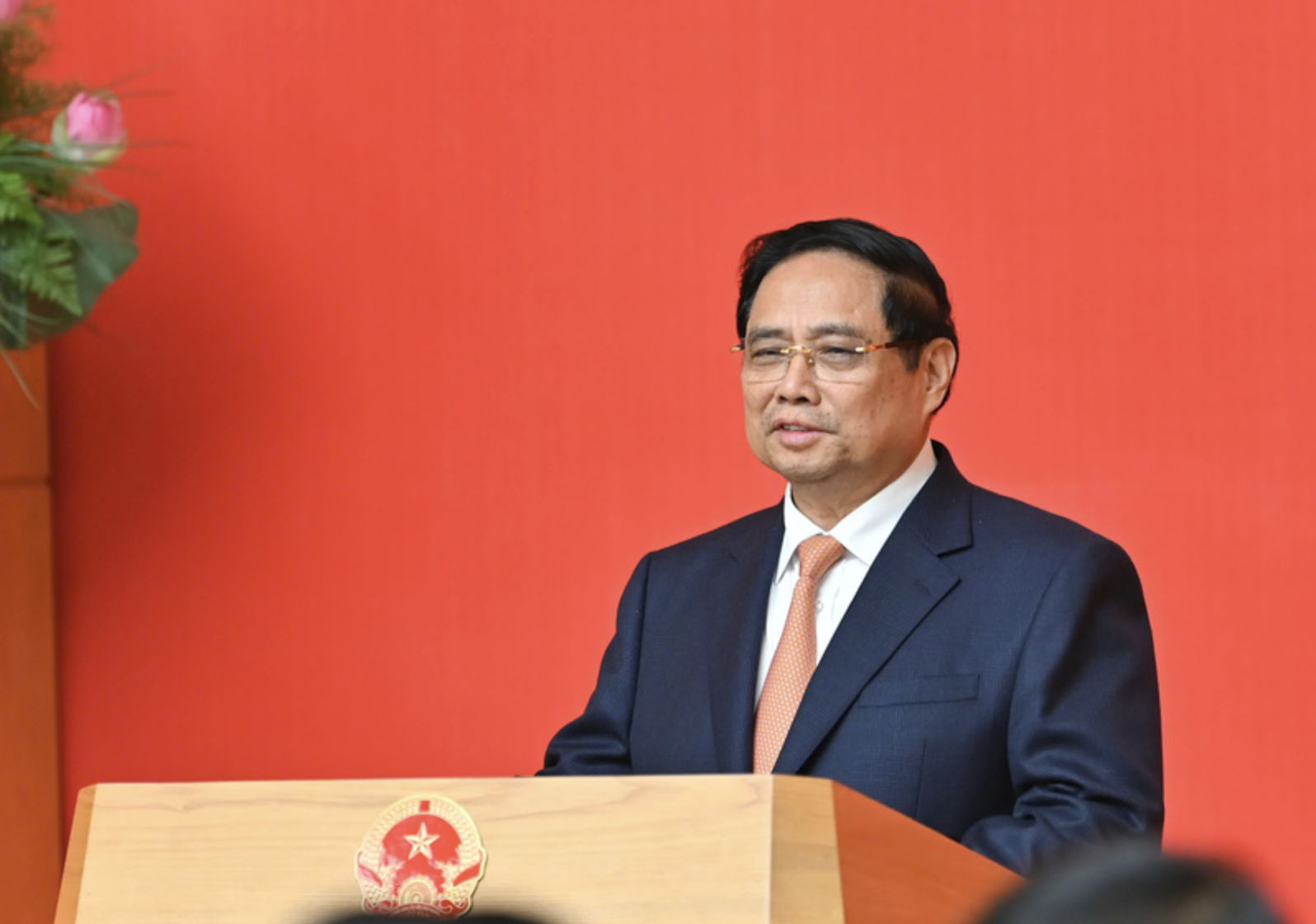
19:05 | 23/03/2025 23:19 | 22/12/2025News and Events
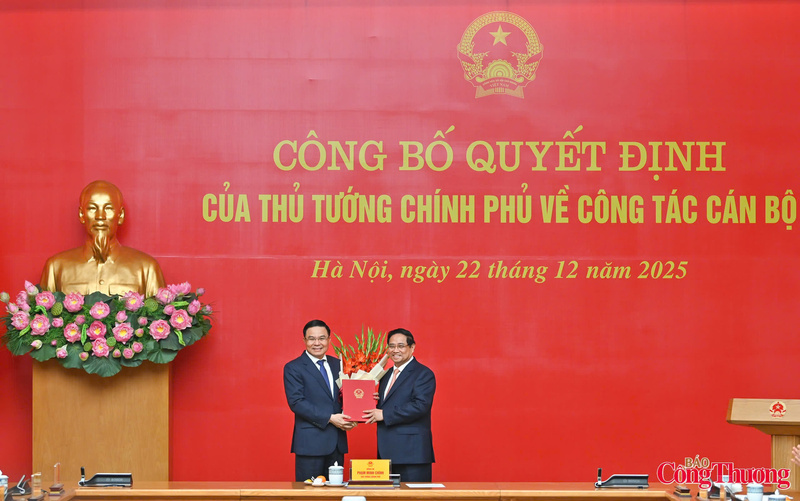
19:05 | 23/03/2025 14:41 | 22/12/2025News and Events